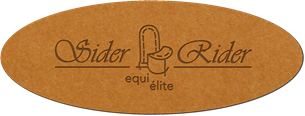NEWS AND INSIGHTS
This page is a space dedicated to the presentation of the latest brand news with curiosities and insights directly from the Design department.
POCKETS PAD – Riser pad with interchangeable shims
With the growing attention to the correct set up of the saddle-saddlepad-horse system and the strong impact that this topic has on the well-being of the horse, we couldn’t miss the opportunity to analyze the issue and respond with our reasoned solution: POCKETS PAD!
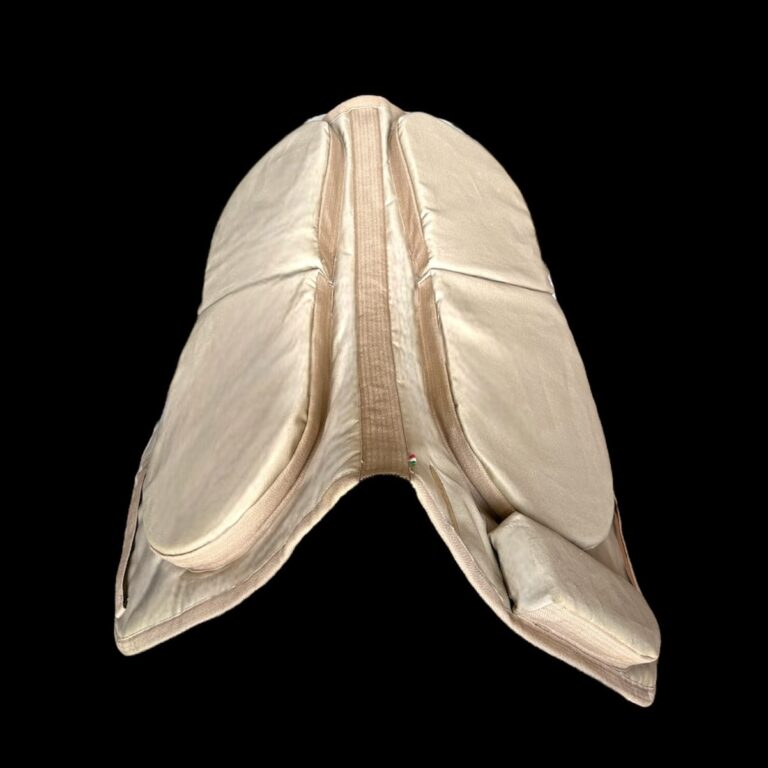
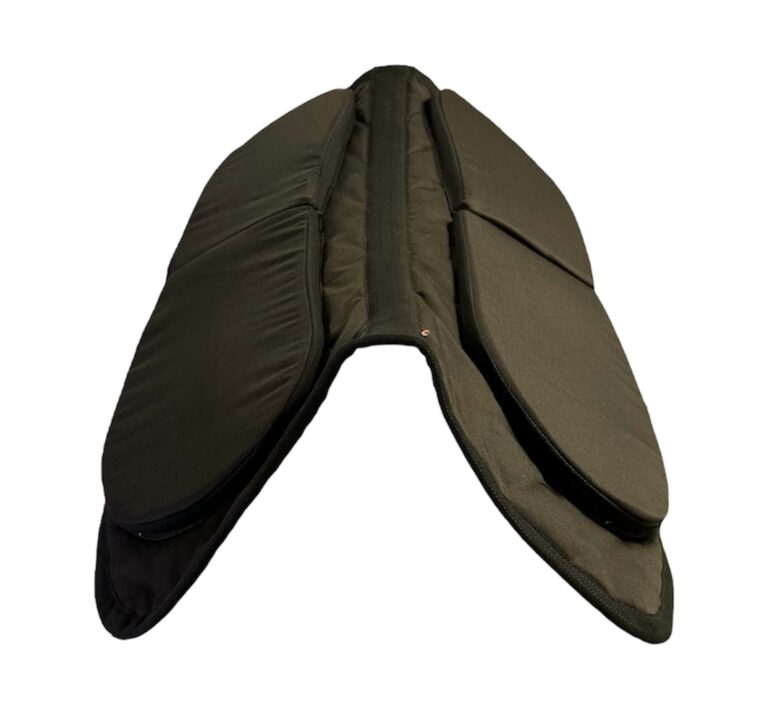
How is it done?
ASIDE POCKETS PAD specific for Side Saddle
RISER/EXTRARISER POCKETS PAD specific for Jumping/Dressage
Why is it done this way?
In an ideal world, every horse should have its own tailor-made equipment (especially the saddle) at every stage of life, a skilled rider, ad hoc feeding and should live under the watchful eye of saddle fitter and equine health operators (physiotherapists, osteopaths, veterinarians).
Unfortunately, the reality is often different.
As we know the horse is not an inanimate object: it undergoes continuous morphological changes due to periods of more or less intense activity, seasonal climate change, nutrition, age. Even the saddle does not remain unchanged over time because the panels (that is, the cushions with which it rests on the horse) with wear become thin and deform due to the crushing that undergoes the internal padding.
Also, even when the saddle-saddlepad-horse system is perfectly fitting, it is still strongly influenced by the rider’s posture and balance.
Finally if we consider that all this delicate balance is found in a dynamic system (the horse moves!) it is clear that pursuing an ideal proposal of correct setting at every step and for the entire duration
of the activity, is a challenging task!
Starting from the essential concept that Pockets Pad does not replace a saddle that for shape and size does not properly fit the horse, we wondered:
– What structure should a corrective saddle pad have?
– What materials should it be made of?
So says the science!
We have sought the answer in the basic principles of Science and in the final tests.
Let’s start from the beginning:
– What happens between the saddle and the horse when ridden?
The rider’s weight exerts a compression from top to bottom. Partly it is returned upwards, partly transformed into heat. The saddle-saddlepad-horse system is never perfectly still so moving it creates friction that expresses in rubbing and heat. Finally the horse sweats producing moisture.

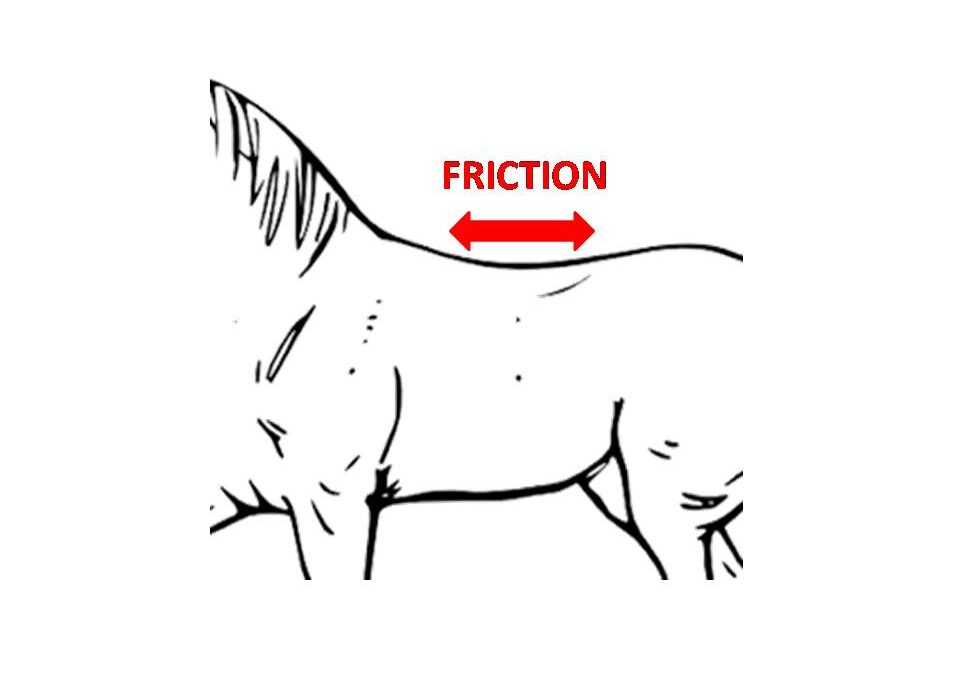

– And how is the interaction of COMPRESSION, FRICTION AND MOISTURE defined?
“Pressure sores are areas where there is skin damage, caused by a lack of blood flow due to the prolonged application of pressure. In addition, pressure sores are often caused by the pressure associated with skin tension, friction and moisture, especially in areas that cover the bones.”
(Di Joshua S. Mervis, MD, Tufts University School of Medicine; Tania J. Phillips, MD, Boston University School of Medicine. Revisionato/Rivisto set 2023)
Assuming that compression, friction and moisture are conditions which cannot be completely undone:
– What help do we expect from a corrective saddle pad (apart from providing support to the
saddle only where needed)?
1. Shock absorption. Attenuation of the compression effect distributing the rider’s weight evenly, thus avoiding peaks concentrated in certain points.
2. Attenuation of the friction effects through the use of lightweight and non-abrasive materials.
3. Heat dissipation and perspiration of sweat moisture.
In the following diagram, we compared the characteristics of some of the most commonly used materials for padding corrective/protective saddlepads.
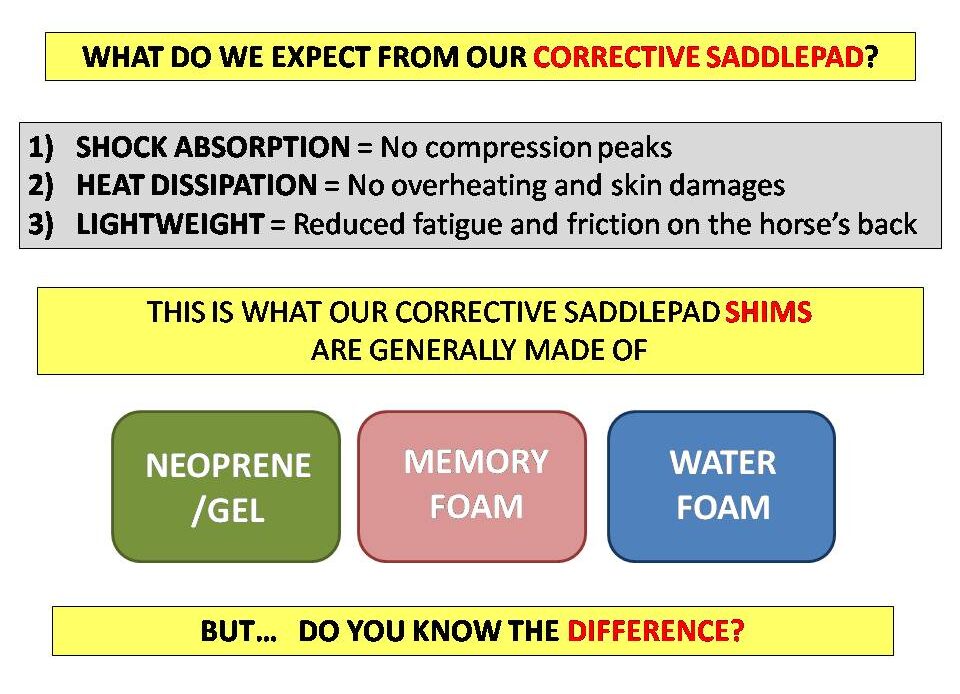
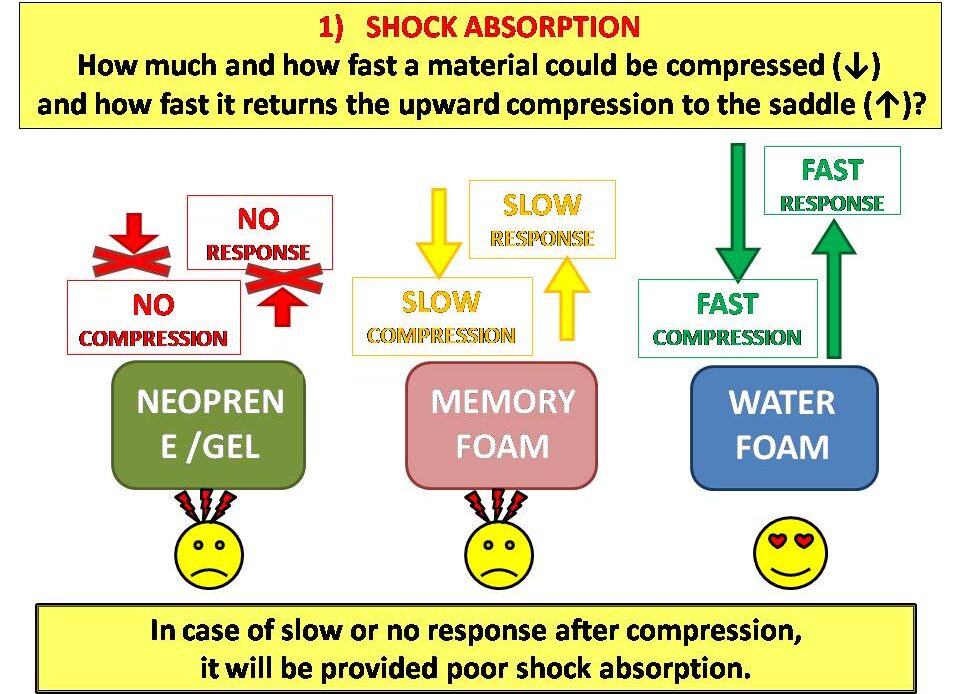
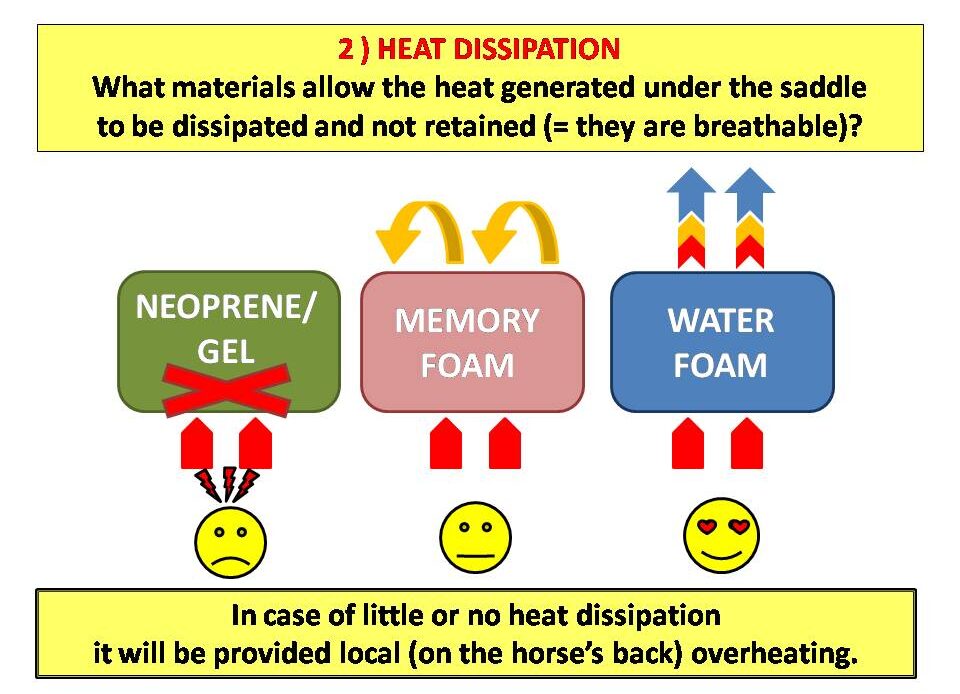
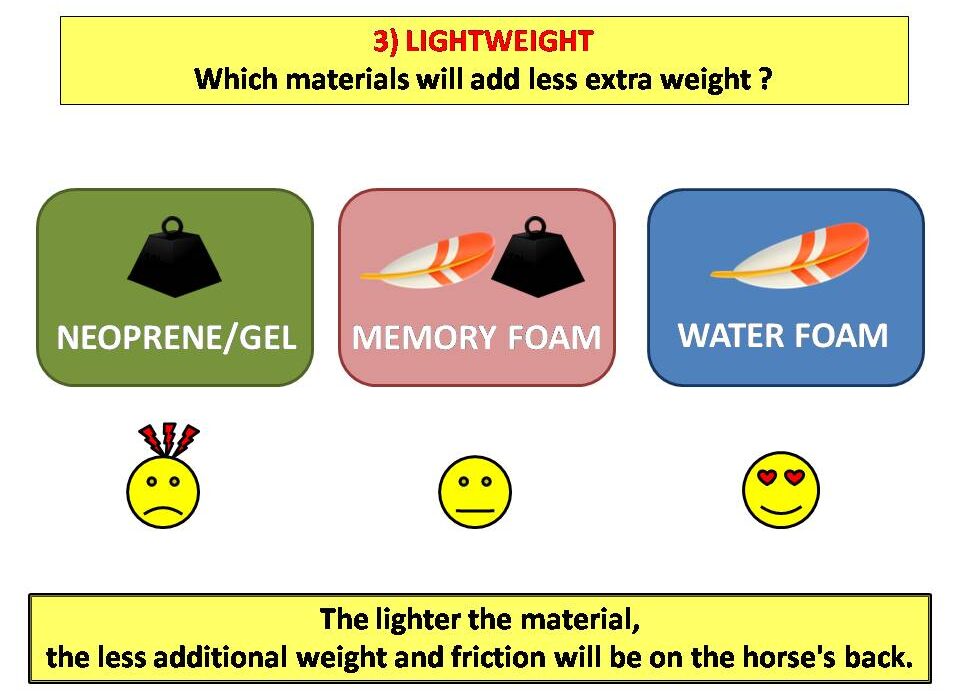
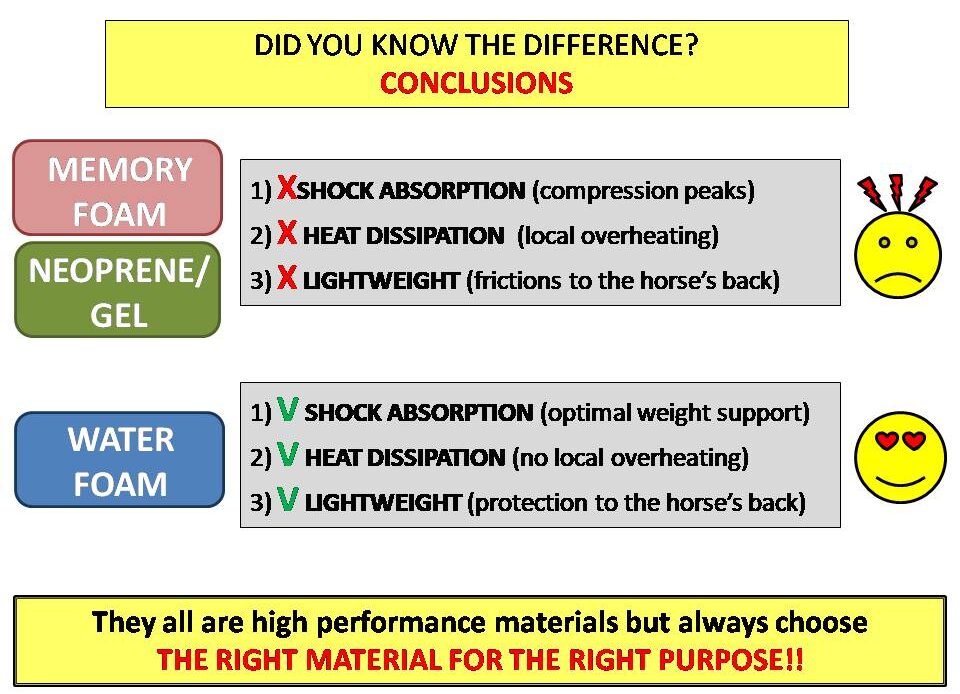
To pad Pockets Pad pockets we therefore decided to use a specific water foam compound in different thicknesses. In the EXTRA RISER model, the water foam is partially coupled to felt (material that under certain conditions accentuates the support of the saddle, remaining lightweight and breathable). The peculiar shape given to the felt allows the cushion, which should be placed with the felt down (horse side), to fit precisely and anatomically at the base of the withers without touching it and supporting the other layers of water foam.
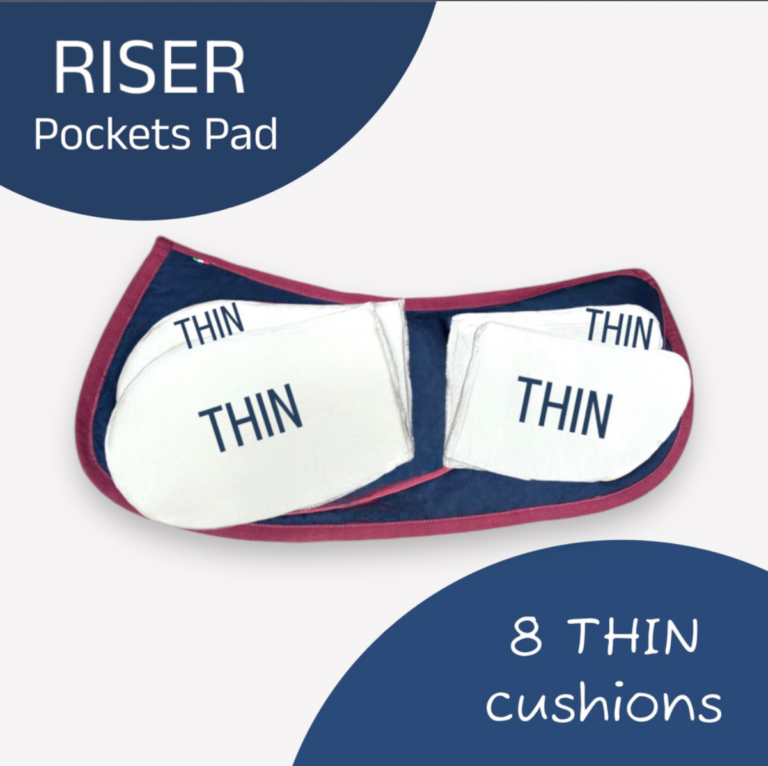
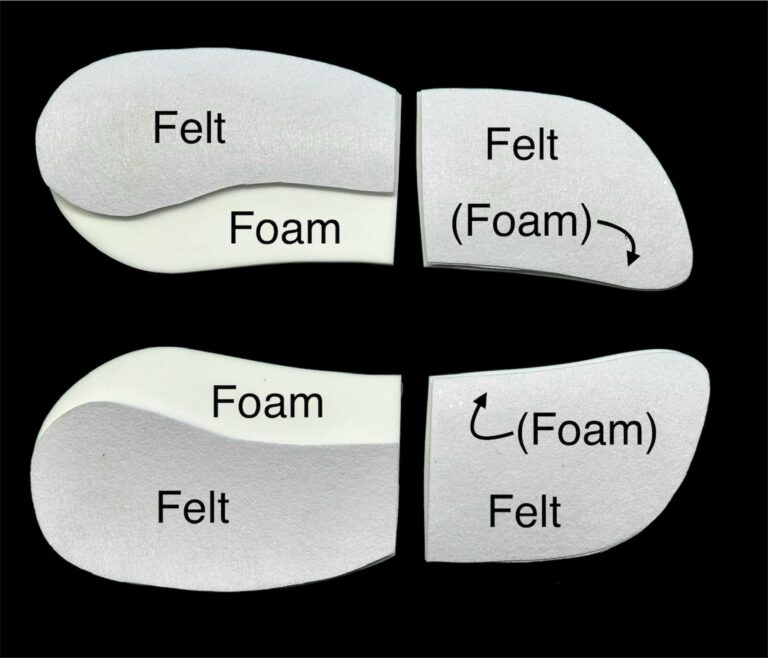
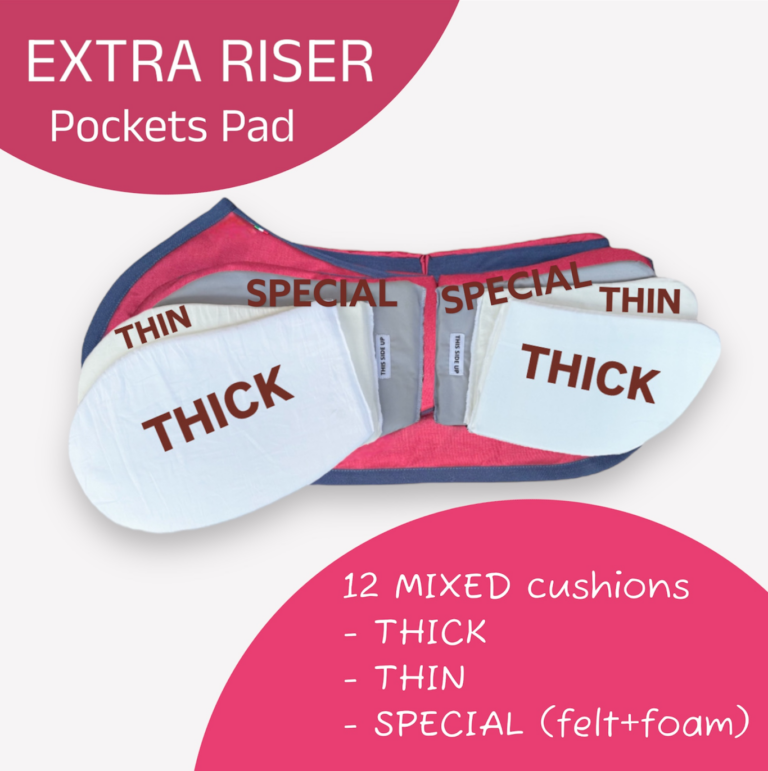
The compression test
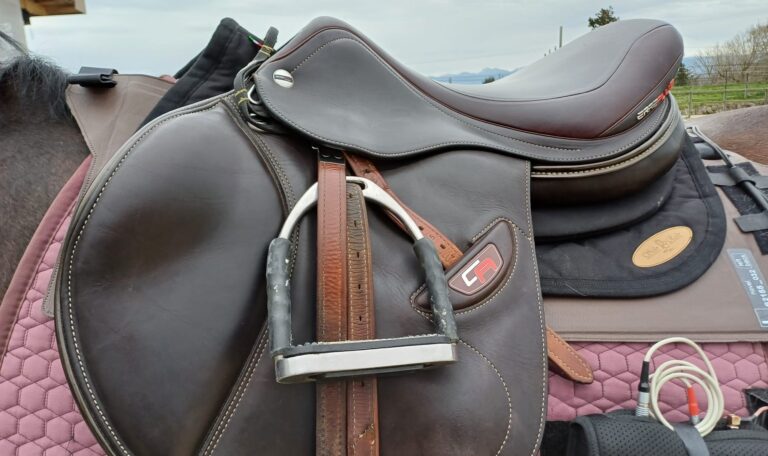
To check the performance of the product born from upstream considerations, we tested it at the 3 gaits (walk, trot, gallop) through a mattress equipped with compression sensors placed under the saddle.
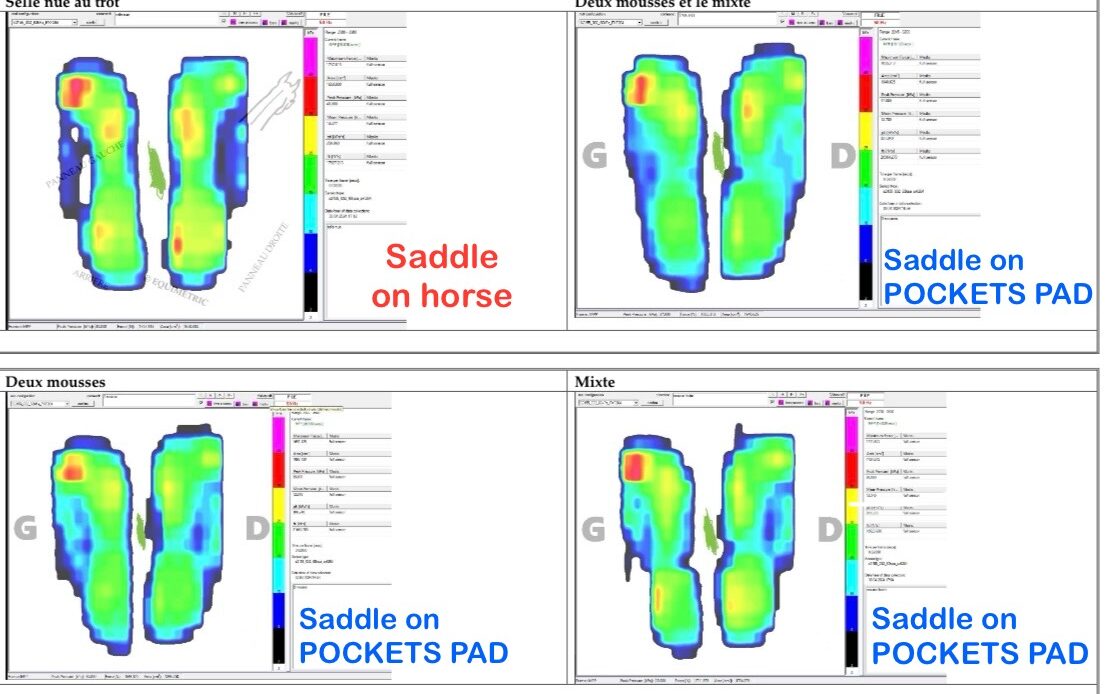
La Fig.1 represents a comparison at trot of the compressions generated by the saddle placed directly on the horse and on Pockets Pad in multiple configurations of medium thickness padding (RISER model).
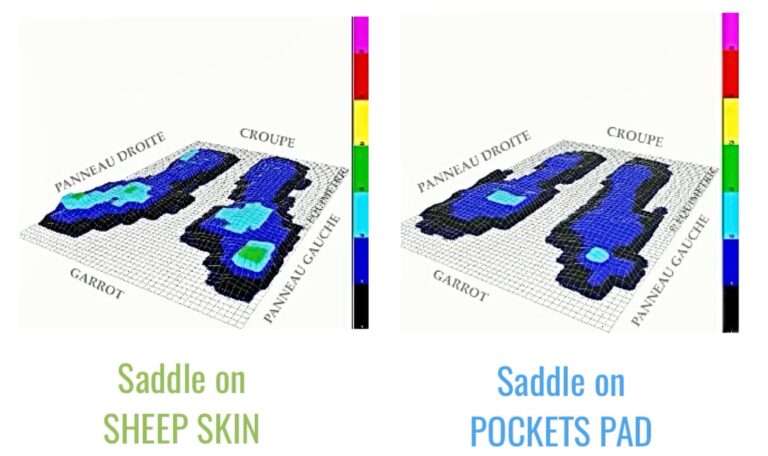
Fig. 2 shows the distribution of the rider’s weight. Note that in the case of the saddle resting on Pockets Pad, the blue and green compression areas are definitely more attenuated than the saddle resting on the sheep skin (RISER model).
The video compares the compression exerted by the saddle resting on sheep skin (left) and on Pockets Pad (right). The two tests were performed a few minutes apart to have conditions as similar as possible (same horse, rider, saddle and terrain).
Teamwork always wins!
Teamwork always wins!
The subject is wide and complex. Here it has been discussed by hints but we like the idea of sharing the reasoning that lead us to make certain choices. The path of growth and improvement of our products is constantly evolving. We are always open to dialogue with our customers and all those who wish to give us suggestions or are in need of specific products!
Come ordinare
Una volta definito quale prodotto incontra meglio le tue esigenze e quelle del tuo cavallo, sarai guidato passo passo nelle misurazioni e nella scelta definitiva del design.
